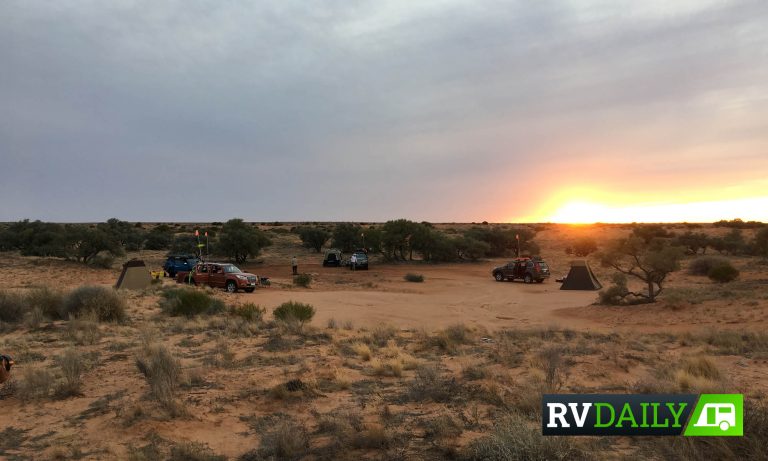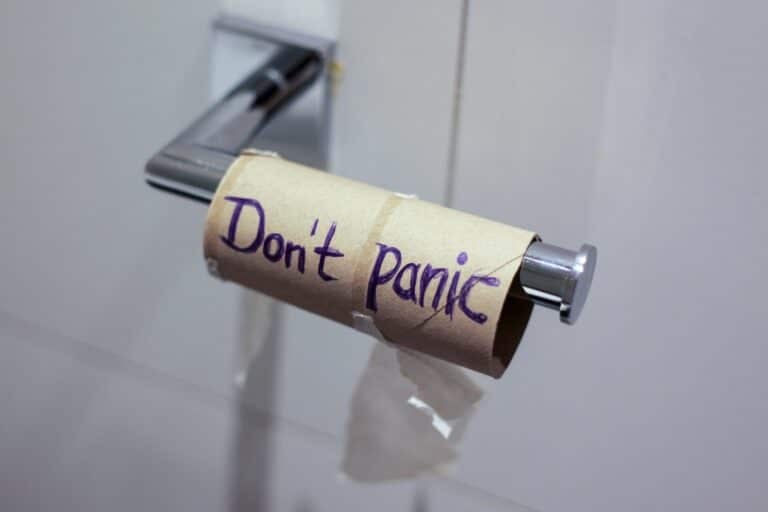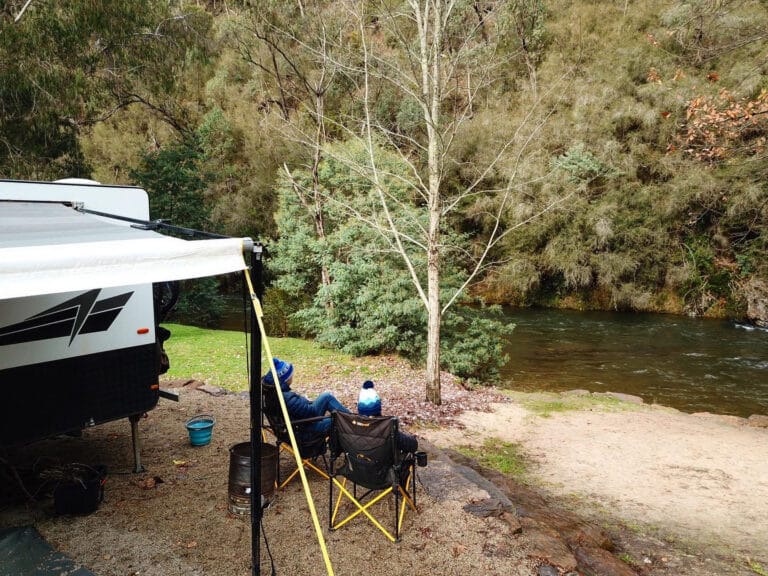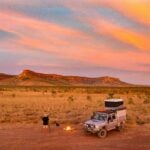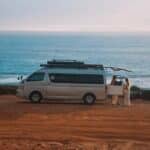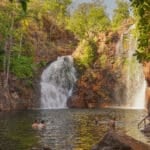Check out eight of our most common environmental mistakes, and simple ways to avoid them
Words by Juliette Remfrey | Images by Juliette Remfrey & Loran Haworth
If you’re reading this, chances are you love touring and want to leave our spectacular wild places as you found them. Even the most well-meaning tourer can do damage, but by following these simple tips you can reduce your environmental impacts.
Not Enough Research
The most important part of any trip is the preparation. Aside from the usual “Where am I going?”, “What do I want to see?”, “How long will I be gone for?”, “Cryo-vacced beef or chicken curry?”, consider the following:
- Is my RV allowed? If it is highly discouraged,
seriously consider whether you need to take
it or just want to.
- Permits and passes. Presumably you’ve read the
accompanying documentation which you’ve agreed to.
It will contain important environmental rules to follow.
- Are the tracks open?
- Are there any sensitive areas to avoid?
- Where can I set down for the night?
- What’s the weather forecast?
- Read about the experiences of others
You’ll come away with knowledge that’ll help you while you’re there (and maybe a story or two to share over the CB with your convoy).
Incorrect Tyre Pressures
Many tourers still get this wrong.
- On the blacktop – road pressures,
taking into account your load
- A bit less on dirt
- A bit less again on rocks
- Less again on sand
Run the lowest pressures you can for the terrain.
How much pressure you need is so variable due to vehicle, load and tyre combinations. If unsure, speak to your mechanic, accessories and/or tyre shop – not your mate that likes getting stuck and boasting that they didn’t air down. High pressures add to corrugations, dig out tracks further and make it harder going on your rigs with a greater chance of mechanical failure. Invest in a compressor and a tyre gauge and don’t be scared to experiment until you find the sweet spot. Don’t forget to include the trailer in this process.
It’s the law in a lot of places, and essential for flora and fauna protection. At risk of sounding like your slightly whacky greenie aunt; tracks fragment habitat, increase erosion and create edges prime for invasion by pests.
- Consider the season and weather forecast. Many tracks are closed during the wetter months for protection of the track and environment. Up-to-date information is generally available online and from the local ranger’s office.
- Avoid spinning your wheels in a muddy bog hole, and if you can straddle it with your rigs even better. Don’t make your own tracks or widen existing ones by taking shortcuts. Get your mud fix in a mate’s paddock, not a national park.
- Keep to ruts on beaches and follow all directions from signs and barriers. It may help to avoid encounters with shore birds. If you see any wildlife, slow down considerably until it or you have passed.
- If you’re headed for a designated campsite, camp within the boundaries. If there are no designated campsites there will often be rules about how far you can venture off track to set up camp. Know them.
Not Cleaning Your Rigs
You might let yourself go for a few days, but your rig’s hygiene needs to be top of mind.
- Check for critters; specifically, small and furry or cool and scaly. They love the temporary home you provide them, so be sure not to pack them up.
- Use the first available opportunities to brush out and spray down your vehicles. We’re not talking concourse level detail, but get at areas harbouring mud and plant material in your rigs and gear, and do it as soon as possible to minimise the chance of spreading a pest plant or pathogen to a new area.
- Look for no entry signs, and where there’s a hygiene station for your rigs (or your feet), use it as directed.
- Quarantine areas don’t just occur on state borders. Know the restrictions for the areas you’ll be passing through and check your rigs for any fresh fruit and veggies. Dispose of as required in designated bins only. Better yet, plan meals in advance to avoid wastefulness.
If you’ve done your research thoroughly you’ll be alert to potential pest issues in the area and able to take the necessary precautions.
Personal Hygiene
It baffles me that a fully-grown adult needs to be reminded of how to look after their family’s personal hygiene, but campsites littered with nappies and toilet paper confirm it.
- When nature calls and there are facilities provided, use them. If you can wait that extra 5km, support the small town you’re passing through by stopping and buying something and having a chat – not just using their toilet and pissing off!
- Always wait until you get to a proper dump point before dumping your toilet waste (and do it frequently).
- If toileting in your RV isn’t an option, dig a hole at least 15cm deep, 100m away from any water course and the campsite (and/or track if possible), bury your business, burn toilet paper if safe (it doesn’t degrade quickly) or carry it out for later disposal in ziplock bags.
- Feminine hygiene products, baby wipes and nappies do not degrade and must be carried out and disposed of in town. Carry strong rubbish bags for this task.
Washing Up
Washing up is something we’re home experts at, but when touring we may need to improvise. If you read my article on grey water (see link below), I went into detail on the topic.
- If there are washing up and/or shower facilities in town,
use them.
- If you’re washing yourself in a river, avoid using any chemicals. They damage and kill aquatic ecosystems and pollute drinking water downstream. That means no soap, shampoo and conditioner.
- If you must use chemicals, opt for grey water safe and biodegradable (AS4351) and contain grey water for short-term re-use and/or dispose of at a dump point in the next town.
- If containing it isn’t an option, keep it to a minimum and move water in a bucket at least 50 metres from the source before using.
- Seal up all rubbish to avoid inviting animals in. Consider moving rubbish bags into a solid container or the rigs at night.
Campfires
There is nothing more Aussie than sitting around the Bush TV at night with good company. But there are times when it’s not appropriate. Consider:
- The area, the season and the fire danger. Research restrictions for the area and keep abreast of Total Fire Bans.
- Do you actually need that fire? Particularly in summer when the nights are warmer, consider using a stove for cooking. They’re less bulky than firewood and safer.
- Use existing fireplaces. If you must create a new one, be sure to have researched the maximum size and minimum depth required.
- Collect firewood only if permitted and only using fallen timber. Inspect thoroughly to make sure nothing is living inside. Better yet, swing by a servo and get your own. Leave fallen timber for flora and fauna to use.
- NEVER, EVER LEAVE YOUR CAMPFIRE UNATTENDED! Yes, I am shouting! Too many bushfires result from escaped campfires. Put out fires with water, and the whole pit must be cool to the touch. Don’t bury coals as they can continue burning underground.
Things to Leave Behind
What you don’t take is sometimes more important than what you do.
- Pets. Leave in responsible hands back home if you’re heading into most national parks. It’s illegal and you can face hefty fines. Domestic pets distress and kill wildlife and spread disease. Take your buddy safely contained in your rig using freeways, but when planning your route be sure to research where they are not permitted.
- The bush isn’t your backyard. The local fauna and your neighbours aren’t impressed by Acca Dacca playing at 9,000. Stay quiet enough and you may get some cool visitors checking out your campsite.
- Similarly to noise, keep your lights to the minimum required. Lights disturb nocturnal fauna, and part of the beauty of getting away is the lack of light pollution. Turn off your lights, lean back in your camp chair, let your eyes adjust and be star-struck by the night’s sky.
On the flipside;
- When something breaks don’t just leave it there! That goes for the rigs and everything contained within. You got it there, it’s your responsibility to get it out. If you see rubbish and can carry it out, do.
And that’s a wrap! Either your conscience is clear or you have a few areas to work on. What other simple, practical, environmentally-conscious tips can you share with your fellow tourers? Let us know here…
